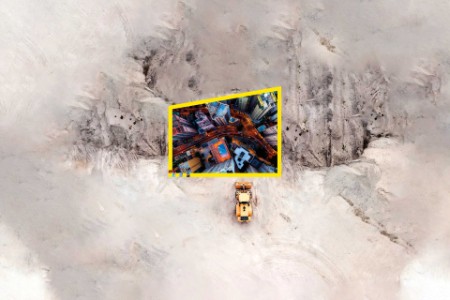
Chapter 1
How will COVID-19 alter the structure of the international system?
The pandemic will inevitably bring sweeping changes to the global order.
The balance of power and influence will be realigned
The already strained US-China relationship will likely become even more fraught, in the view of Ideation Jam participants. The pandemic also appears to be accelerating the weakening of multinational institutions and creating a vacuum of global leadership. This could create a return to multipolarity, with an expanded role for Europe or for smaller countries whose prestige was enhanced by their effective pandemic response.
Globalization will go local
There was a strong consensus COVID-19 will advance the backlash against globalization amid the sharpest reduction in international flows (e.g., trade, investment, people) in modern history. With vulnerabilities in cross-border supply chains exposed, we can expect supply chains to be restructured, with built-in redundancy and resilience at the expense of some efficiency. Manufacturing will come closer to home markets, boosting the trend toward regionalization and re-localization. Similarly, agricultural supply-chain issues which have caused shortages and gluts are accelerating the rise of local and vertical farms, which are more resilient.
A new concept of human mobility will emerge
Labor mobility has fallen sharply since the start of the pandemic, as governments have clamped down on travel and immigration – restrictions that will likely persist. But even as the pandemic reduces the flow of people, it will enable a different concept of labor mobility. If people can’t relocate for work, work will relocate for people. For jobs that can be performed remotely, companies will move to global remote workforces.

Chapter 2
How will COVID-19 affect the structure of societies and economies?
COVID-19 laid bare existing weaknesses in social safety nets and systemic policy failures.
Our sessions highlighted some of the key risks, foremost among them worsening inequality and the social damage of billions being exposed to the virus and cratering economies.
Societies will address inequality and repair social safety nets
The pandemic is hitting low-income groups hardest — minorities, young people, women, and undocumented workers. Their lack of wealth and overrepresentation in jobs requiring physical presence exposes them to greater hardship and risk.
The crisis has also widened social disparities between the politically left and right, old and young, rich and poor. Labor unrest is increasing as workers demand better protections — personal protective equipment, distancing measures, higher pay, more sick leave, and improved access to healthcare. Participants expect government reforms in response, such as recognizing undocumented workers, investing in healthcare capacity or even the introduction of universal basic incomes in some developed countries.
Action on social justice will increase
Sustained protests against systemic racism are sweeping across the US and solidarity protests have emerged in other countries. While we didn’t explore this question in our sessions, which predated the protests, we think it’s no coincidence this is happening during the COVID-19 pandemic. When people are already thinking about a systemic reset, they may also be more inclined to think about correcting systemic racism. The Black Lives Matter movement may be a harbinger of increased awareness and action on issues of social justice — during the pandemic and beyond.
Urban landscapes will be remapped
COVID-19 will fundamentally reshape cities, accelerating trends already under way. Health concerns will drive residents of large cities to seek lower population density in suburbs and small towns. Remote work will make moving out of city centers increasingly feasible, since commute times will no longer be a factor. These shifts will have profound implications for societies and economies, affecting everything from tax revenues to urban planning and education policy.

Chapter 3
How will COVID-19 change the ways in which firms and markets operate?
Companies may find they need to appoint a chief culture officer to enable these changes.
Our sessions identified several trends accelerated by the global pandemic which will transform talent management and business models.
Remote work will transform talent management
Participants overwhelmingly believe remote work is here to stay. Many people now working remotely have found they prefer it, while employers have discovered they can manage remote teams effectively and see potential to reduce real estate expenses. This has sped up the arrival of a long-anticipated trend: the delinking of talent from place.
As a result, participants said that new corporate talent models will be required, which will likely include the following dimensions:
- Recruiting talent globally and convening the best teams for projects rather than maintaining standing headcount
- New metrics and rewards for onboarding, promotion, succession planning and leadership, with empathy and soft skills coming to the fore as success factors
- Convergence of human resources and operations
Digital transformation and long-term value will create new business models
COVID-19 also accelerated two trends driving change in business models: digital transformation and the corporate shift to long-term value. With virtual and digital replacing physical wherever possible, adoption of automation, AI, and AR/VR will surge, participants predicted. The ability to deploy computing power, bandwidth, the cloud and cybersecurity will define winners. Success will depend on continuous business model innovation with agile, open collaboration.
At the same time, several participants observe that the pandemic has put human welfare and sustainability front and center. Consumers see a new role of companies for good and will value companies demonstrating a long-term value agenda in culture, purpose and ethics.
You may need a Chief Culture Officer
Corporate culture will be central to success in the post-pandemic world. Yet with a remote workforce and distributed governance, establishing and maintaining a corporate culture will become even harder, participants noted. A few of them suggested that companies will appoint Chief Culture Officers to lead investments in culture-building from the top down, and from the bottom up.

Chapter 4
How will COVID-19 affect individual behavior and household structures?
Themes emerged that could reframe the long term: trust, changing consumption and a new focus on mental health.
Trust will go smaller and local
Amid social distancing, people are relying on social media more than ever, which could worsen polarization and diminish societal trust if they stay within known social circles and filter bubbles. Additionally, many participants expect trust to shift to the local level as confidence in some national governments decays thanks to mismanaged pandemic responses. If neighborhoods become like-minded enclaves, this could increase polarization, increase xenophobia and heighten stranger anxiety.
The absence of real-world interactions could also make it harder to build trusted new relationships — affecting everything from dating and marriage to the integration of new team members in the workplace. Companies will need to pay special attention to closing such deficits.
Minimalist and self-sustaining lifestyles could endure beyond the pandemic
Consumption has declined sharply amid the pandemic, thanks to a deep recession and historic unemployment. Households are engaging in more mindful consumption with a greater focus on sustainable and essential purchases. Do-it-yourself behaviors are also on the rise, whether cooking from scratch or undertaking home improvement projects to accommodate working and schooling from home. It’s likely that these shifts will continue in some form after the pandemic is over.
Mental health will come into focus
COVID-19 is taking an immeasurable toll on mental health, due to numerous factors, including social isolation, financial and healthcare worries, and the strain of adapting to remote work and home schooling. Participants expect this will have long term impacts akin to post-traumatic stress disorder (PTSD); yet, some are hopeful that the new focus on mental health issues may reduce stigma and increase availability of support services. The world beyond the crisis may be one in which mental health is more honestly recognized and supported.
Related content
Guiding principles for leaders
The pandemic has unleashed a world of uncertainty. It can feel challenging to envision what the next month will bring, let alone the next year. How do you proceed? We believe leaders should follow a few guiding principles in charting their path through the pandemic and beyond:
- Plan for the unthinkable. “Unthinkable” scenarios are no longer dismissible; they should be a core part of your strategic planning process. The challenge is to do this in a structured and considered way that minimizes risk while allocating resources efficiently. Striking that balance isn’t easy, and it’s a topic we’ll explore in future articles.
- Scan — and wait. The journey ahead is uncertain. We will likely see huge swings in public-health outcomes, economic recoveries, investor sentiment, political stability, public policy responses and more. The situation will move at different speeds — and sometimes in different directions — across individual markets. Rather than act too quickly, continuously monitor the situation, which includes scanning widely and identifying the appropriate metrics and tipping points for your organization, sector and geography.
- Be flexible — and move quickly. The challenge is to build flexibility, so you can move quickly when the time is right. The changes catalyzed by the crisis should facilitate this. The responses to COVID-19 are accelerating the move from the physical to the virtual — replacing corporate headquarters with virtual work, business travel with Zoom meetings, global supply chains with more flexible approaches. Adopting these shifts will not only help you weather the crisis; they might also give you more flexibility to respond quickly in the world that lies beyond it.
Summary
The COVID-19 pandemic has unleashed changes that seemed unthinkable just a few months ago. Understanding the pandemic’s impact demands scanning for risks and drawing insights from a wide range of domains. EYQ convened 100 senior professionals around the world to develop a far-sighted view, imagine the unthinkable, and, crucially, identity the steps business leaders need to build into their thinking about the future. The changes will be profound, but guiding principles will help leaders chart their path through the pandemic and beyond.


